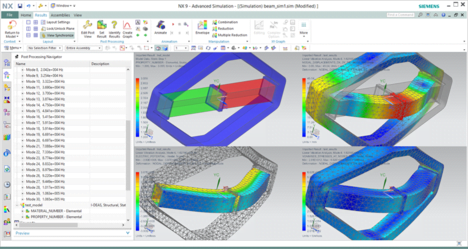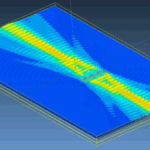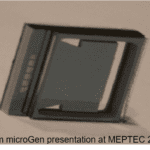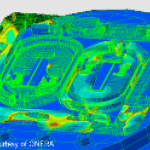Piezoelectic simulations
Introduction
Services
Piezoelectric Simulation
Unlock the potential of your innovative projects with our advanced piezoelectric simulations. Our methodologies ensure precise results, driving innovation in your industry.
Custom Solutions
No two projects are alike. When needed, our team specializes in tailoring our simulation workflow to meet your unique needs, providing solutions that go beyond expectations.
Case Studies
- Energy harvesting from vibrations using piezoelectric cantilevers
- Piezoelectric sensor for pressure measurement in fluid systems
- Piezoelectric actuator for precision positioning in microsystems
- Piezoelectric transducer for ultrasound imaging in medical applications.
Surface Acoustic Wave
A piezoelectric SAW device is a type of electronic device that uses the interaction of mechanical waves and electric fields on a piezoelectric material. The device consists of a thin layer of piezoelectric material with electrodes on both sides. When an electric signal is applied to the electrodes, it generates a mechanical wave on the surface of the material. The SAW can be used to filter, amplify, modulate, or delay signals in various applications, such as wireless communication.
Energy harvester
A piezoelectric vibration energy harvester is a device that uses the piezoelectric effect to convert kinetic energy in the form of vibrations into electrical energy. It consists of a cantilever beam that is attached to a vibrating object and an extra mass, a rectifier, and a DC-DC converter. The piezoelectric material deforms under the vibration and generates an alternating voltage, which is then rectified and converted into a usable direct current.
Accelerometers
A vibrating piezoelectric inertial sensor is a device that measures acceleration by converting mechanical vibrations into electrical signals. Some sensors consist of a piezoelectric material that generates an electric charge when it is deformed by an external force. In other sensors, the frequency of the vibration changes according to the applied acceleration. The change in frequency is detected by measuring the electric charge on the piezoelectric material.
Technology
Finite Element Method
The finite element method (FEM) is a numerical technique that divides the domain into small elements and solves the governing equations. FEM can handle complex geometries, nonlinearities, multiphysics interactions, and dynamic loading conditions. FEM can also provide accurate and reliable results that match experimental data or theoretical predictions.
The finite element method is used in our OOFELIE::Multiphysics Solver to predict the behavior of piezoelectic devices.
Thermal coupling
Acoustic coupling
Numerical simulation of sonar by combining piezoelectric effect and vibro acoustics is a challenging and important topic in underwater acoustics. Sonar is a device that uses sound waves to detect and locate objects in water. Vibro acoustics is the study of sound and vibration in fluids and solids. By combining piezoelectric and vibroacoustic effects, one can design and optimize sonar transducers that can emit (transmission mode) and receive (receiving mode) sound signals efficiently and accurately.
In our OOFELIE::Multiphysics Solver, the propagation of acoustic wave is managed by mean of the Boundary Element Method (BEM) so that the modeling of sonar involves the coupling between two complementary discretization methods: FEM & BEM.
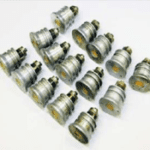
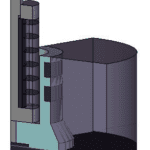
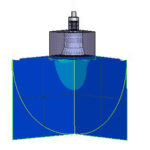
If you are interested in learning more about our piezoelectric simulation capabilities, please do not hesitate to contact us. We would love to hear from you and discuss how we can help you achieve your goals and solve your challenges.

